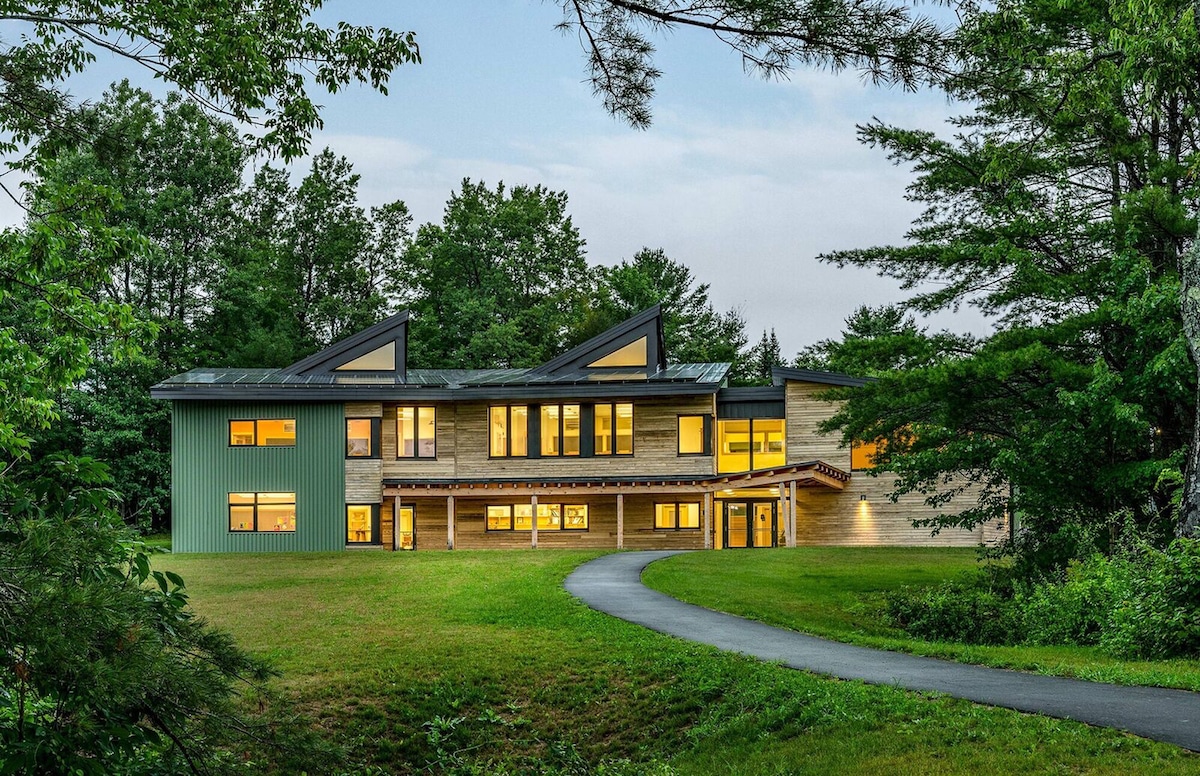
Maine Coast Waldorf High School is the first Passive House-certified high school in the U.S. [Photo: Courtesy of PHIUS]
PHIUS (Passive House Institute US) recently announced the award recipients of the 2018 Passive House Projects Competition. The winners were honored at the 4th Annual Design Awards Ceremony on Thursday, September 20 as part of the 13th Annual North American Passive House Conference in Boston.
Back by popular demand, this juried competition recognizes outstanding achievements in passive building design. Finalists were selected from certified Passive House projects of all types and in all climate zones.
Entries were evaluated based on the following categories: energy performance, design, craftsmanship, use of healthy materials, level of difficulty for the climate and site, and cost effectiveness.
The winners are:
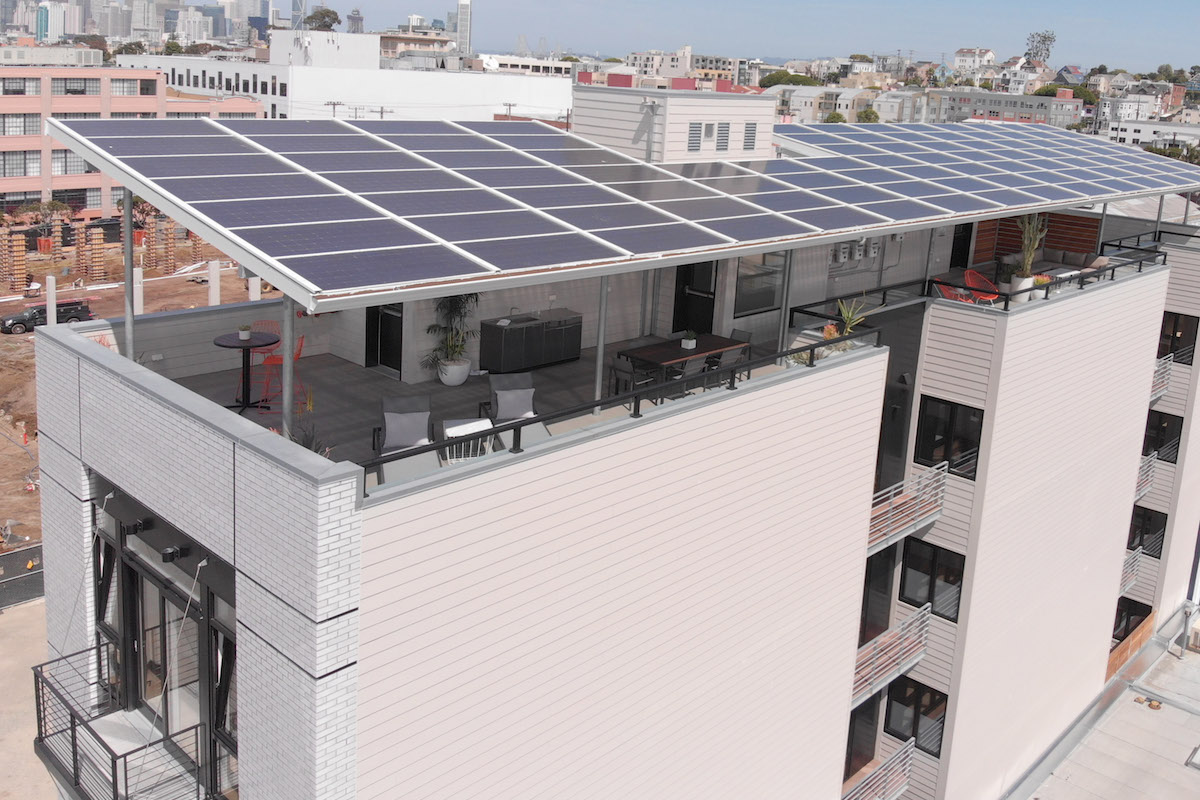
Sol Lux Alpha is energy-efficient and powered completely by renewable energy sources. [Photo: Courtesy of PHIUS]
Best Overall Project – Winner: Sol Lux Alpha Passive House Nanogrid in San Francisco, California
Sol Lux Alpha is the first Passive House-certified multi-unit nanogrid structure introduced in the U.S. housing market. Extremely efficient, resilient, and powered by 100% renewable energy, the housing development is a six-story, four-unit carbon neutral living and transportation system.
Inhabited units generate twice as much energy as they consume. Excess energy is then sent to the grid, where it can be reused for EV charging, or “sold” at a rate of 9 cents per kWh to the CleanPower SF Community Choice Aggregation. Each residence features three Tesla Powerwalls, which store two to three days’ worth of energy and are recharged daily by the PV system.
Five separate nanogrid energy systems enhance the project’s resilience, providing backup in the case of grid disruption—even during power surges or brown-outs. Designed to be integrated into a community system, the nanogrids can be combined to create a 100% renewable energy microgrid, with excess energy being used for infrastructure and electrified community transportation.
- CPHC®: Graham Irwin
- Builder: Sarter Construction & Design Inc, DBA
- Architect: RG-Architecture
- PHIUS+ Verifier: Steve Mann, Home Energy Services
- Developer: K&S Florida L.P.
- PHIUS+ Source Zero Certified

Madison House allows two empty nesters to keep their active lifestyle while reducing their environmental impact. [Photo: Courtesy of PHIUS]
Best Project by a Young Professional Under 35 – Winner: Madison House in Olympia, Washington
The Artisans Group’s clients, two active empty nesters, desired a custom home within minutes of downtown Olympia that would greatly reduce their carbon footprint and allow them to gracefully age in place. They also wanted enough space for hosting social gatherings.
Designed to be the ideal energy-efficient home for the couple, the Madison House is bright and comfortable with a light-filled interior, consistent temperatures throughout, and high indoor air quality. The great room’s expansive views create a sense of connection between the interior and the surrounding community. This passive house also includes a utility room with driveway accessibility and plenty of space for repair and storage to let the couple continue to bike as their main form of transportation.
- CPHC®: Randy Foster, The Artisans Group
- Architect: Tessa Smith, CPHC®, The Artisans Group
- Builder: The Artisans Group
- Lead Draftsman: Owen Martin, CPHB
- Superintendent: Brian Colbert, General Contractor
- Energy Modeling: Skyler Swinford, CPHC®
- PHIUS+ 2015 Certified
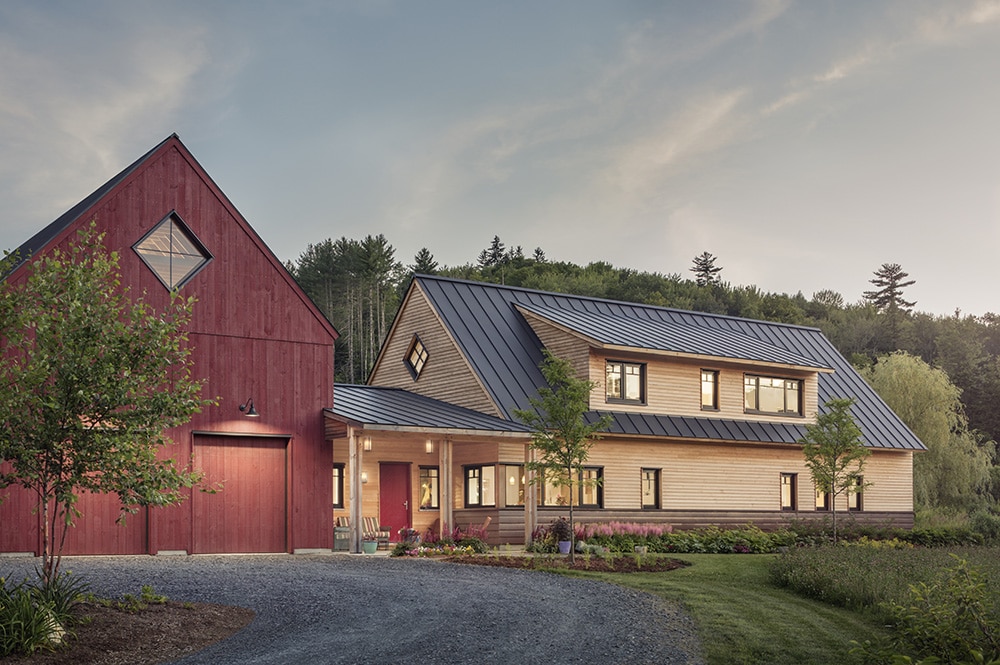
Joslin Hill Passive House is a beautiful sunlit home with incredibly low energy costs. [Photo: Courtesy of PHIUS]
Single Family – Winner: Joslin Hill Passive House, Waitsfield, Vermont
The Joslin Hill Passive House has an array of solar panels and airtight construction to keep the warmth in. The certified Passive House is anticipated to be net zero, keeping energy costs low even during harsh Vermont winters. Its Tesla Powerwall stores backup electricity, too. The dwelling is made of local all-natural materials that beautifully transform and weather with the changing seasons. Its CorTen steel clapboards eliminate the need for painting or any exterior finish, forming a rust-like appearance after years of exposure. Many of its interior finishes, like the decorative stair wall, incorporate locally milled white pine.
The house is designed to be lived in for a lifetime with wheelchair accessibility, wide doorways, accessible fixtures, and all the essentials on the main floor. The main living area is framed by large south-facing windows that fill the space with natural light. The interior also has a lofted ceiling transected with a glass bridge, linking the guest bedrooms above and overlooking the garden and fruit trees below.
- CPHC®: Jesse Thompson
- Architect: Kaplan Thompson Architects
- Builder: Shelterwood Construction
- Engineer: Structural Integrity
- PHIUS+ Rater: Karen Bushey, CPHC®
- PHIUS+ 2015 Certified

Accord, NY Passive House has high insulation ratings and provides a high level of comfort, too. [Photo: Courtesy of PHIUS]
Single Family – Honorable Mention: Accord, NY Passive House in Accord, New York
North River Architecture and Planning designed this certified Passive House for their senior designer, Peter Reynolds. With a powerful solar array and high insulation ratings, this 1,730-square-foot net-zero home is healthy, comfortable, and low-maintenance.
- CPHC®: John Loercher, Stephanie Bassler
- Architect: North River Architecture and Planning, PC
- Builder: Reynolds Design Associates, Inc.
- Mechanical Systems Designer: Baukraft Engineering
- Structural Engineer: Kaaterskill Associates
- PHIUS+ Rater: Troy Hodas
- PHIUS+2015 Certified
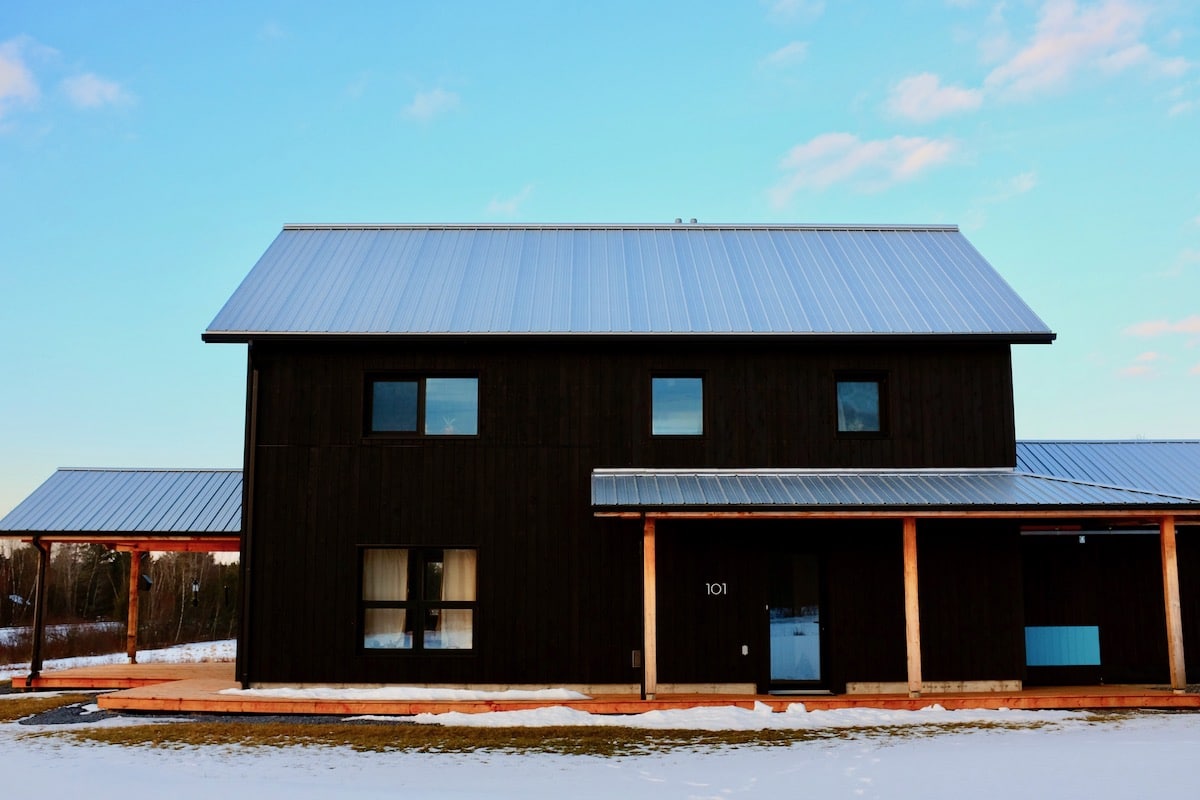
The Springhouse can withstand even the coldest Québec winters with its highly insulated building envelope. [Photo: Courtesy of PHIUS]
Single Family – Honorable Mention: The Springhouse, Maison des sources in Abercorn, Québec, Canada
The Springhouse is the first Passive House-certified new construction in Québec. Its simple, compact design follows rigorous insulation and efficiency standards with the aid of energy modeling software. The building also features high indoor air quality and its annual energy costs are 80% less than a new house built to code.
- CPHC®: Chris West
- Builder: Rocket Construction Inc.
- PHIUS+ Rater: Homesol Building Solutions
- PHIUS+2015 Certified

The Battery is also the winner of the 2018 ULI Philadelphia Willard Rouse Award of Excellence. [Photo: Courtesy of PHIUS]
Multifamily – Winner: Capital Flats – Phase 3, The Battery in Philadelphia, Pennsylvania
In the Northern Liberties neighborhood, the Battery is the third phase in Capital Flats, a three-phase, 42-unit development built over a period of 18 years. Completed in 2017, the Battery addresses two pressing local and global issues, creating low-cost housing and reducing the ecological impact of the built environment.
The four story, net-zero, Passive House-certified building features 25 affordable micro-units. Every part of its design prioritizes efficiency and low energy costs. The building includes an extensive green roof and geothermal heating, cooling, and hot water. Its highly insulated, pre-fabricated, thermal envelope features triple-pane windows, air-tight construction, and a 77 kW photovoltaic canopy on the roof for added energy savings.
- CPHC®: Tim McDonald
- Architect: Onion Flats, Tim McDonald, Pat McDonald, Howard Steinberg, Johnny McDonald, Ted Singer, Lizzie Rothwell, Dan Addis, Kara Haggerty Wilson, Jonathan Doran, David Serrahima
- Builder: JIG Inc
- Structural Engineer: Larsen & Landis
- MEP: Kitchen & Associates
- PHIUS+ Rater and Verifier: Kitchen and Associates, Neil Goldman
- Developer: Onion Flats, Tim McDonald, Pat McDonald, Howard Steinberg, Johnny McDonald
- PHIUS+ 2015 Certified
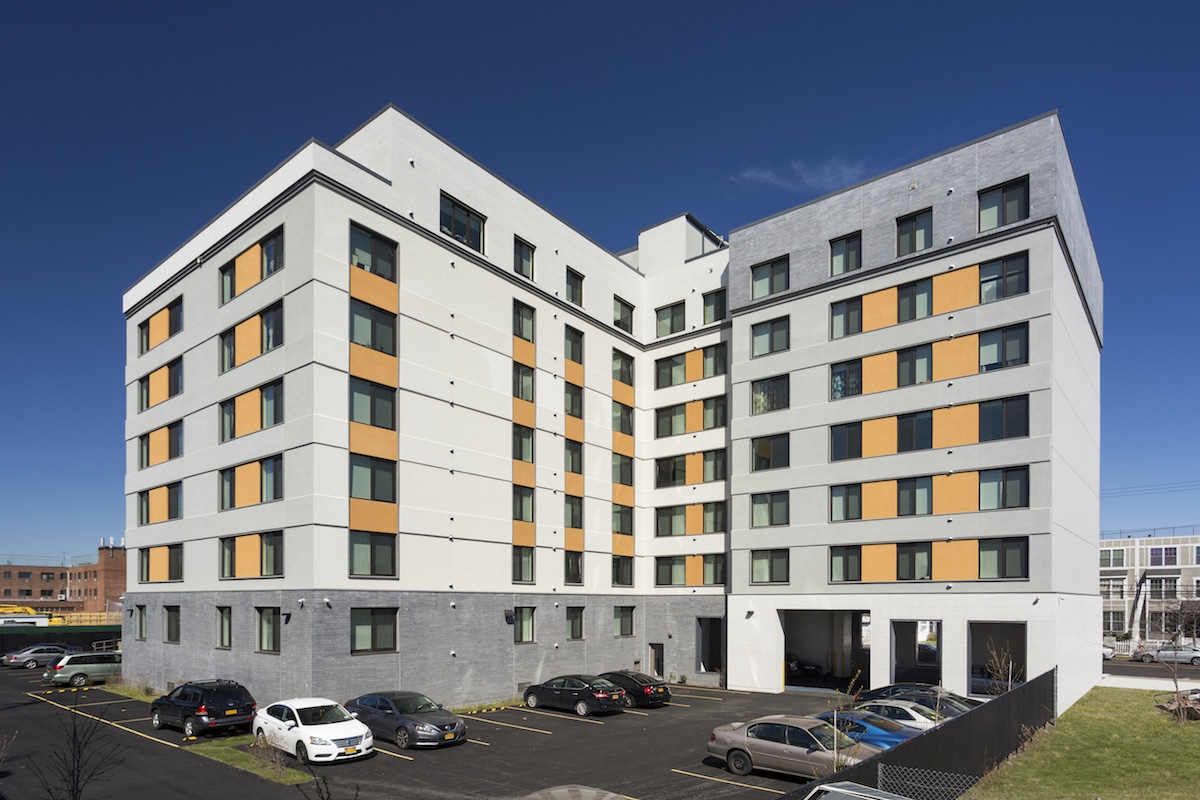
Beach Green Dunes is part of a two-phase development in the Rockaways. [Photo: Courtesy of PHIUS]
Multifamily – Honorable Mention: Beach Green Dunes in Far Rockaway, New York
This 101-unit project incorporates insulated concrete forms, energy recovery ventilation, VRF central air source heat pumps, and a large rooftop PV system. Its use of bioswales, hydric habitat plantings, and permeable paving will enable efficient water management and full storm water retention onsite.
- Architect: Curtis + Ginsberg Architects LLP
- Structural Engineer: De Nardis Engineering, LLC
- MEP Engineer: Johnson & Urban LLC
- Expediter: William Vitacco Associates
- Sustainability: Steven Winter Associates, Inc.
- Developer: The Bluestone Organization
- PHIUS+ 2015 Certified
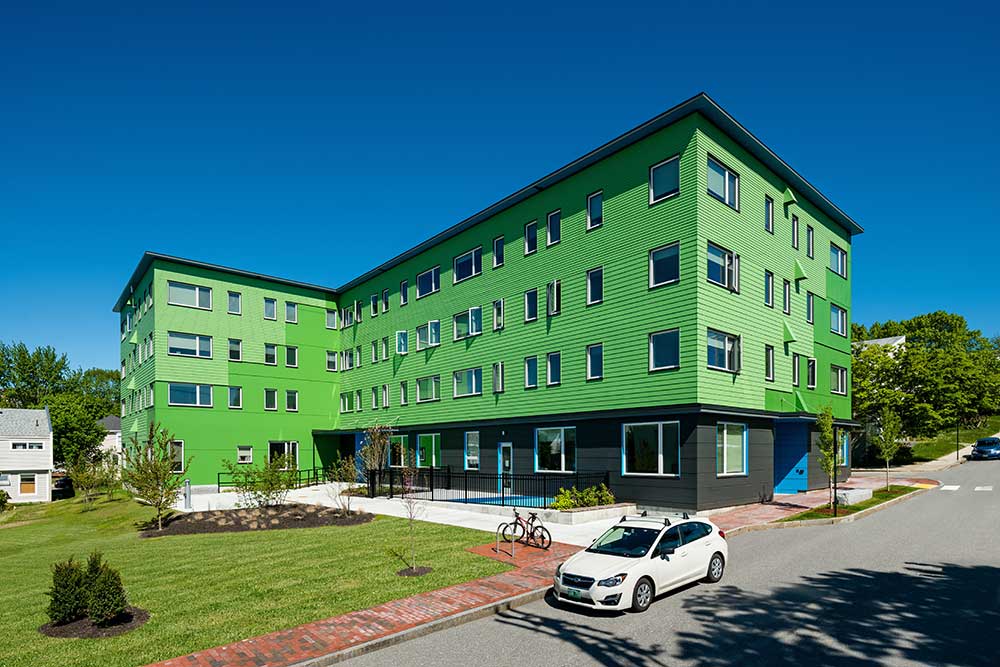
Bayside Anchor Apartments cost 20% less to build than the average cost for a similar building in Portland, Maine. [Photo: Courtesy of PHIUS]
Affordable – Winner: Bayside Anchor Apartments in Portland, Maine
Bayside Anchor is the first new Portland Housing Authority building to be constructed in 40 years. In 2013, Kaplan Thompson Architects partnered with the Portland Housing Authority, Avesta Housing, and Wright-Ryan Construction to enter the national Lowering the Cost of Housing design competition. Their team was the only national winner, awarded for innovation focused on energy efficiency, cost-effective building techniques, and socially equitable urban development.
The project’s main goal was to create 45 new affordable homes for low-income residents to help mitigate the city-wide housing crisis. Bayside Anchor required detailed energy planning for its highly efficient insulation, airtightness, and doors and windows. The fresh air ventilation system and air-tight building enclosure guarantee residents low-cost heating bills during Maine’s cold winters. A true community hub, Bayside Anchor is as beautiful and inviting as it is cost-effective and energy-efficient. The building includes artist-commissioned murals, a community police station, and a Head Start classroom on the ground floor.
- CPHC®: Jesse Thompson
- Architect: Kaplan Thompson
- Builder: Wright-Ryan Construction, Carroll Associates Landscape
- Engineer: Ransom Consulting, Ripcord Engineering
- Structural Engineer: Becker
- PHIUS+ 2015 Certified
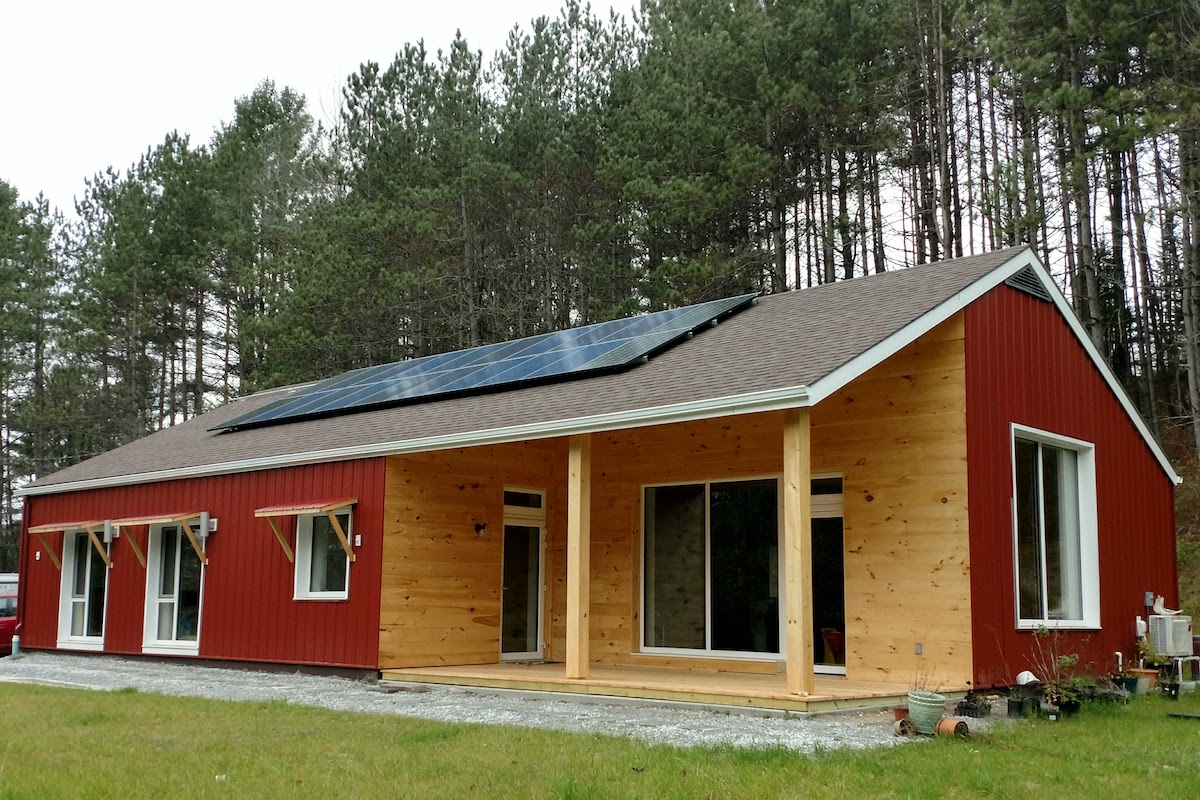
This Passive House project was built by Habitat for Humanity volunteers. [Photo: Courtesy of PHIUS]
Affordable – Honorable Mention: Central Vermont Chapter Habitat for Humanity in East Montpelier, Vermont
Chris Miksic partnered with the Central Vermont Habitat for Humanity chapter to design the East Montpelier Passive House. He worked with volunteer crews onsite to create the healthy, comfortable, and affordable net-zero home.
- CPHC®: Chris Miksic
- Builder: Chris Miksic, Bruce Laundry
- Design: Norwich University, Stonorov Design, Montpelier Construction, and 5 Star Energy Tech
- PHIUS+ Rater and Verifier: Karen Bushey, Efficiency Vermont
- PHIUS+ 2015 Certified
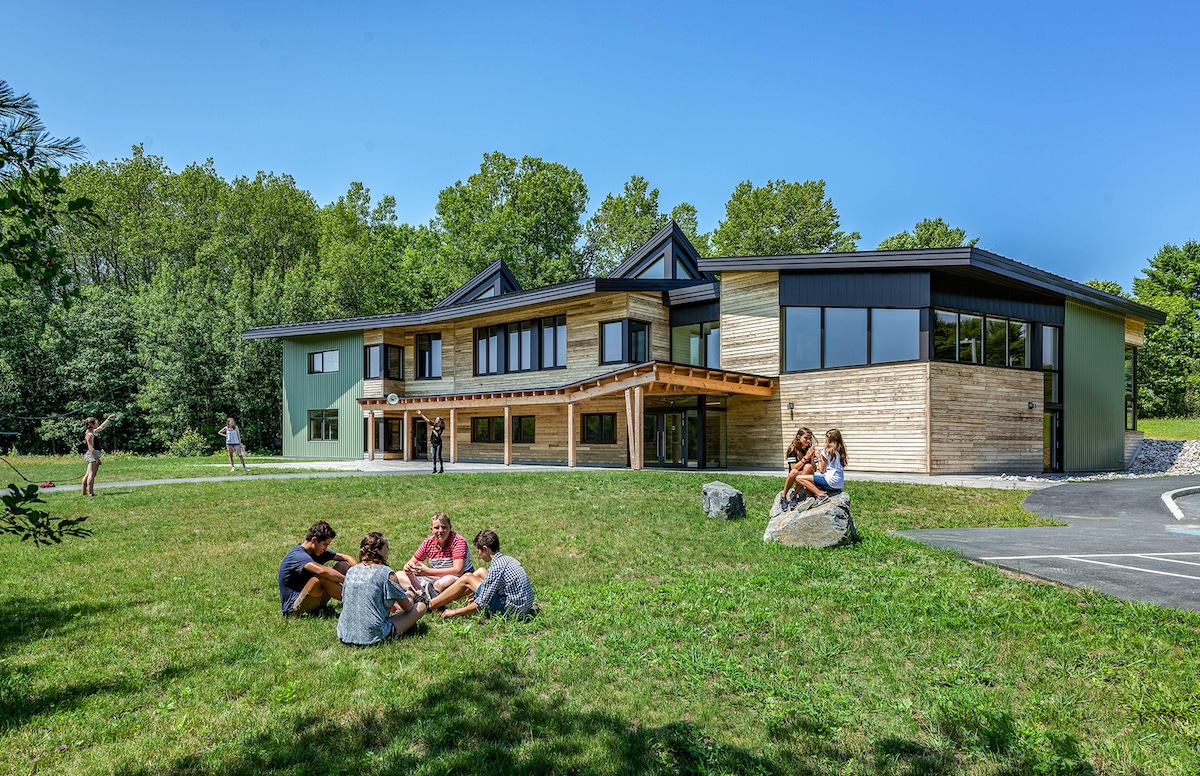
Maine Coast Waldorf High School encourages creative thinking, inspires a love of learning, and prioritizes environmental conservation. [Photo: Courtesy of PHIUS]
Commercial – Winner: Maine Coast Waldorf High School in Freeport, Maine
This new building is the first high school in the U.S. to receive Passive House certification. Maine Coast Waldorf High School exceeded the goal for net zero energy demand. In addition to its Passive House certification, the building is certified as a Maine Advanced Building by Efficiency Maine, which indicates that it is at least 30% more energy efficient than Maine’s minimum energy standards.
Constructed with natural materials that provide high insulation, the building faces south for efficient passive solar design. The dormers on the roof let in natural light to brighten the center of the building. Its sustainable design also features robust building envelopes, triple-glazed windows and exterior doors, efficient HVAC systems, and daylighting controls and shading. To achieve the highest comfort and efficiency, the school utilizes ductless mini-splits for heating and cooling and energy recovery ventilators to deliver continuous fresh air.
- CPHC®: Hans Breaux, Chris Briley (BRIBURN)
- Architect: Harry Hepburn, CPHC® (BRIBURN)
- Builder: Warren Construction
- Mechanical Engineer: Allied Engineering, Inc.
- PHIUS+ Rater: Diane Milliken Schless
- PHIUS+ 2015 Certified
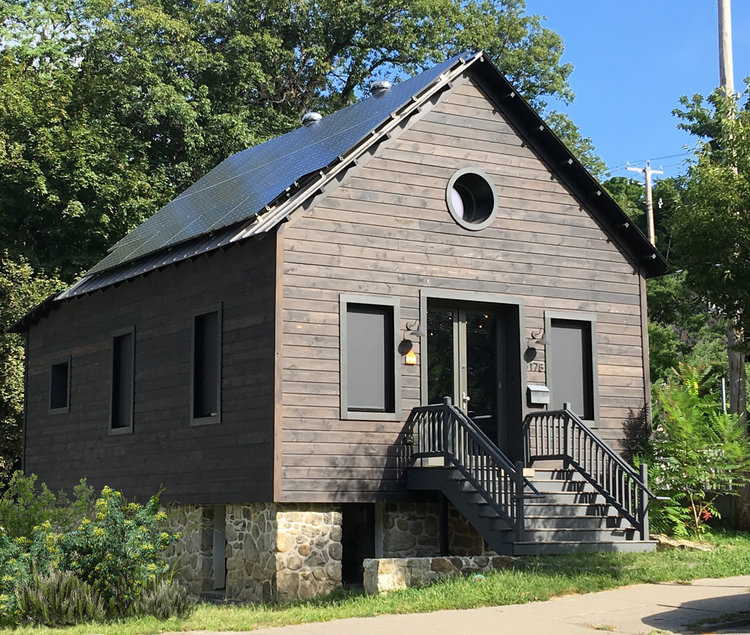
River Architects’ new studio illustrates the firm’s dedication to historic preservation and combating climate change. [Photo: Courtesy of PHIUS]
Commercial – Honorable Mention: 178 Main Street in Cold Spring, New York
River Architects upgraded a modestly sized, historic timber-framed building to meet Passive House standards. The net-positive project achieves high energy efficiency with numerous green features, including its super-insulated building envelope, air-tight structure, geothermal ground loop, and PV solar panels.
-
- CPHC®: River Architects, John Loercher
- Architect: River Architects, CPHC® and Owner
- Builder: Urban Myth and Balanced Builders Inc
- PHIUS+ Rater: Troy Hodas, CPHC®, Spruce Mountain
- PHIUS+ 2015 Certified
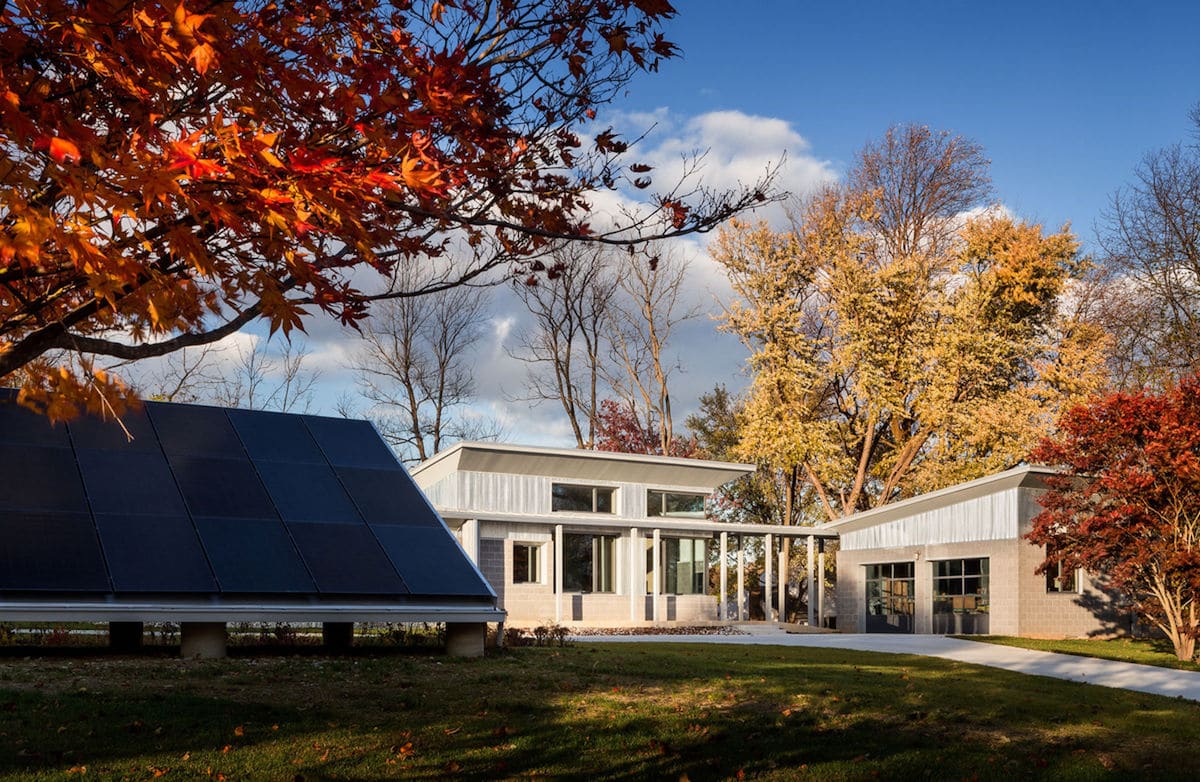
The Old Hopkins Road House is net-positive and ultra sustainable. [Photo: Courtesy of PHIUS]
Source Zero – Winner: Old Hopkins Road House in Clarksville, Maryland
The Old Hopkins Road House deviates from the suburban housing trend of large multi-story homes with turf lawns. This house is one of the smallest in the community (1,800 square feet), but its high ceilings and large windows make the modestly sized home feel spacious. Architect Miche Booz wanted to create a sustainable prototype that could be integrated into any community. On top of meeting Passive House standards, the project has achieved LEED Platinum, Living Building Challenge Petal-certified and Net-Zero, WaterSense, and Energy Star.
The roof overhangs on the south facade nearly eliminate solar heat gain in the summer while letting in plenty of winter sunlight. And the powerful PV system makes the Old Hopkins Road House net-positive—it generated a 48% energy surplus in 2017. The house incorporates many sustainable building materials like durable stainless steel counters, bamboo cabinets, and glass and porcelain tiles.
-
- CPHC®: Michael Hindle
- Architect: Miche Booz
- Builder: Maryland Custom Home Builders
- PHIUS+ Rater: Pando Alliance
- Energy Consultant: David Peobody, Izumi Kitajima
- Additional Modeling Consultant: Jay Hall, Hall and Associates
- PHIUS+ Source Zero Certified

Sol Lux Alpha’s roof deck features a beautiful view, a shaded seating area, and a wet bar. [Photo: Courtesy of PHIUS]
Source Zero – Honorable Mention: Sol Lux Alpha Passive House Nanogrid in San Francisco, California
See details above in the Best Overall Project category.
- CPHC®: Graham Irwin
- Builder: Sarter Construction & Design Inc, DBA
- Architect: RG-Architecture
- PHIUS+ Verifier: Steve Mann, Home Energy Services
- Developer: K&S Florida L.P.
- PHIUS+ Source Zero Certified
PHIUS is a 501(c)(3) organization committed to transforming the building sector by developing and promoting North American specific standards, practices, and certifications for buildings, professionals, and products to create structures that are durable, comfortable, healthy, and energy-efficient.

